Modular: Starfinder Alien Archive — Clark Ashton Smith meets Douglas Adams (with visuals by Ray Harryhausen)
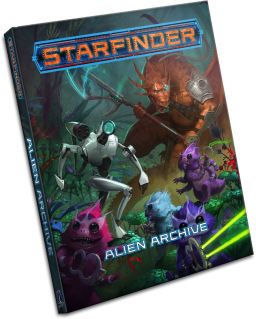
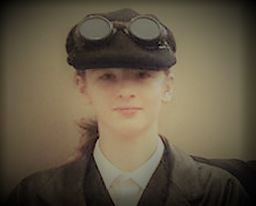
Though writers are notoriously not always the best parents, I’m a Good Dad right now. I got us a preview copy of the forthcoming Starfinder Alien Archive — it’s due out October 18th.
Kurtzhau, my 13 year old son who’s currently GMing the game for his mates, rates it as “Awesome.”
I concur.
80+ new aliens (depends on how you count), 20 playable races (some delightfully nuts ), lots of alien tech, each entry a rich adventure seed in its own right and rules for building your own NPC aliens.
Lovely illustrations. Good writing. And it’s got a sort of creative gravitas. Nothing here is throwaway.
Take the Void Hag.
No one is certain whether void hags are crones who adapted to living in outer space… or a race of alien witches from a distant, unknown world. Void hags aren’t interested in elucidating their origins to those they consider to be lesser beings, which is just about everyone they come across…
…a void hag’s set of robes is her most important possession… First, she weaves the cloak from fibers of plants found on naturally irradiated worlds. Then, she finds a star emitting strong solar flares and waits for a phenomenon known as a coronal mass ejection — a massive explosion of plasma and magnetism — in which she bathes the robes. If she survives, she drags the robes into the center of a nebula, collecting cosmic dust and ionized gas particles along the way…. once finished, the void hag is bonded to her robes and only the strongest magic can separate her from them.
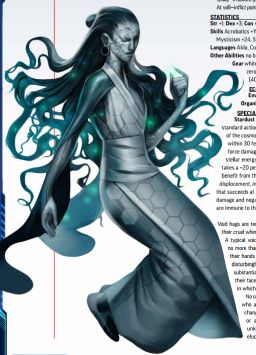
That’s like something Clark Ashton Smith might dream up. Then…
Void hags who are diligent and sadistically inventive can rise to be major players in a drow corporation’s security division, sometimes rooting out spies from within and leading strike teams against other drow holdings.
Erk? (Sound of record scratching.) But it makes sense.
This is a gameverse where magic and assault rifles co-exist. Everything in this book is grounded in that setting. Magical creatures hire on with corporations. Scientists study magical creatures.
Now consider the Assembly Ooze, which is basically a rogue nanobot-fabricator which works like a cross between a Gelatinous Cube and the good old Rust Monster of my gaming youth, disassembling anything synthetic (including sentient androids!) and spitting out whatever it or its progenitors were programmed to do:
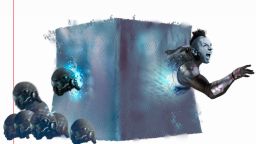
That assembly oozes contain the programming necessary to reproduce is troubling to those who realize its implications: a single rogue assembly ooze introduced into an environment stocked with technological items could completely overrun such a place in a matter of days, leaving behind a wasteland of cheap laser pistols and smoke grenades…
That could almost have come from Hitchhiker’s Guide to the Galaxy, though perhaps it’s closer to the kind of thing Charles Stross might write. Then it takes a turn to the weird:
Some claim to have seen assembly oozes working together to construct entire starships and other large and complex machinery. Where these oozes received their programming is unknown, as is whether such oozes have a master directing their efforts or if they have gained a collective sentience and are working for their own mysterious purposes.
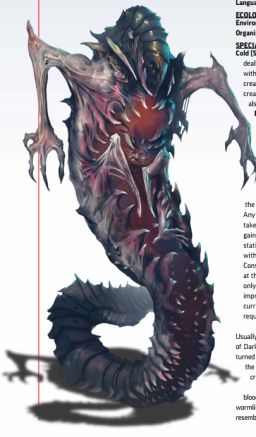
And there’s other stuff that runs the gambit from Leigh Bracket through HP Lovecraft to the X-Files to the modern Dr Who. Aliens that absorb light and emit madness inducing rays. Space zombies. Angels that hunt dangerous technology. Weird things with eyes on wings. Horrors that make face-huggers look cute. Abduction-happy Grey aliens as playable characters.
So as you can gather, the Starfinder Alien Archive veers between as lyrical as a lazy Hendrix solo, and as quirky as Bjork on a pogo stick. Not only is it well written, just like the core rules, it grabs and repurposes tropes the way Attila the Hun must have press-ganged Roman siege engineers.
However, rampaging creativity is not that impressive in its own right. It is after all what we expect from roleplaying game designers.
What’s truly impressive about the Alien Archive is that each of the eighty or so entries has its own detailed background material that goes far beyond fluff and into adventure seeds.
Not all facts are known, and the aliens themselves have their factions. They are also often the source of artifacts. For example, the horrifying Blood Brother that parasitizes off of prisoners kept in its chest cavity “rib cage prison” is the only source of Bloodbrother Serum, an cold-weather survival drug made famous by “the Ascetics of Nar, the brilliant scholar-monks who reside in the Fastness of the Ordered Mind.”
Beautifully written and illustrated, and as inspiring as the bar at Worldcon, the archive throws light randomly on the vastness of the Starfinder setting, and also provides denizens for the core “Pact Worlds.”
This book is indispensable in the sense that the core rules don’t really provide a bestiary. However, it’s also something special in its own right. Kurtzhau can’t wait to throw some of these at his players, and I’m increasingly tempted to take my place at the table.
EDIT: Go back their miniatures on Kickstarter!
M Harold Page is the Scottish author of The Wreck of the Marissa (Book 1 of the Eternal Dome of the Unknowable Series), an old-school space adventure yarn about a retired mercenary-turned-archaeologist dealing with local difficulties as he pursues his quest across the galaxy. His other titles include Swords vs Tanks (Charles Stross: “Holy ****!”) and Storyteller Tools: Outline from vision to finished novel without losing the magic. (Ken MacLeod: “…very useful in getting from ideas etc to plot and story.” Hannu Rajaniemi: “…find myself to coming back to [this] book in the early stages.”)